
Gemsbok
Gemsbok
Gemsbok
Do you know about Gemsbok, a herbivorous animal that lives in Africa and Arabia? Gemsbok is a species of medium to large antelope, known for its distinctive markings on the face and long, beautiful horns. However, since it is not kept in Japanese zoos, many people may be hearing its name for the first time. In this article, let’s take a look at what kind of features and secrets Gemsbok has and peek into its life!
Gemsbok Basic Infomation
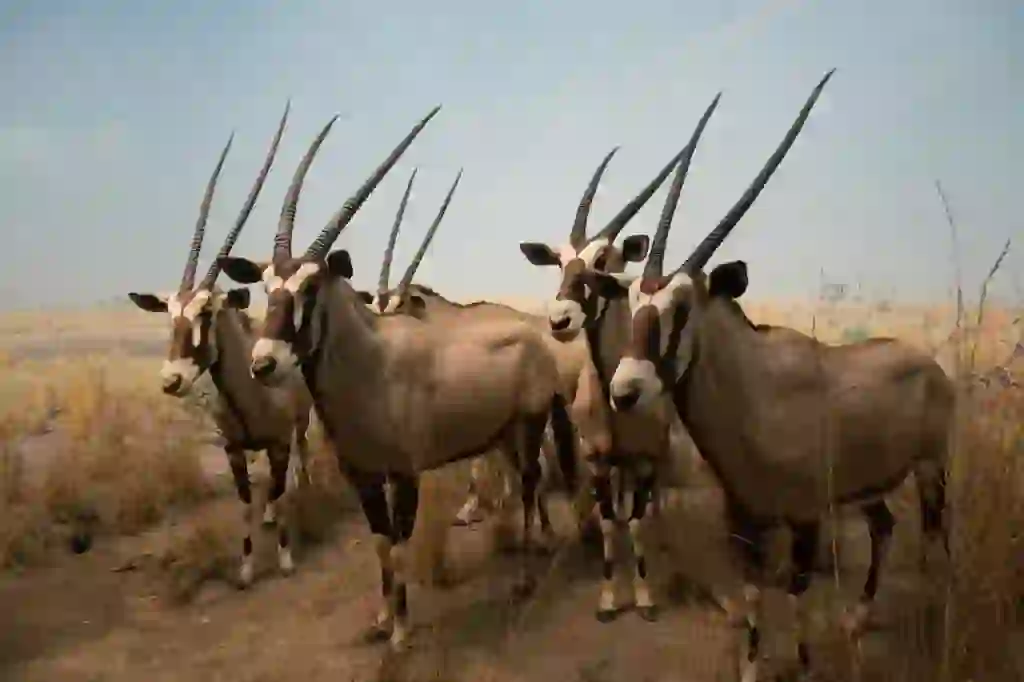
Mammalia-Artiodactyla-Bovidae-Gemsbok genus.
Length 150-190cm. Weight 180-240Kg.
Gemsbok is a species of herbivorous animal belonging to the Gemsbok genus, which inhabits grasslands and deserts in Africa (southern, western, eastern) and southeastern Arabia. While there are about four species classified in the Gemsbok genus, this article will mainly focus on “Gemsbok”.
The body color of Gemsbok is mostly pale grayish-brown, with white and black markings on the abdomen and face, and white “socks” on the legs. Both males and females have long straight horns, but the horns of males are thicker and sturdier.
Gemsbok reaches sexual maturity at around 2 years old and becomes capable of reproduction. The gestation period of Gemsbok is 240-300 days, and females usually give birth to one baby at a time. When Gemsbok mothers are ready to give birth, they separate from the herd and give birth to their offspring in thickets. For the next 2-3 weeks after birth, the mother visits her baby several times a day while keeping it hidden in the thickets. It’s worth noting that Gemsbok babies have reddish-brown body color and do not have white or black markings like their parents. These markings gradually appear as the baby grows.
Gemsbok Q&A

What is the origin of the name Gemsbok?
In English, it is called ‘Gemsbok’, but in Japanese, it is called ‘Oryx’. This time, I will introduce the origin of why it is called ‘Oryx’ in Japanese. By the way, what does the name ‘Oryx’ mean?
Although clear evidence has not been found, there seems to be a theory that the word “Oryx” originated from a Greek word meaning ‘pickaxe’. Perhaps the long horns of the Oryx looked like a pickaxe.
In English, it is called ‘Gemsbok’, and its scientific name is ‘Oryx gazella’. In Japanese, it is also called by another name, ‘Gemsbok’.
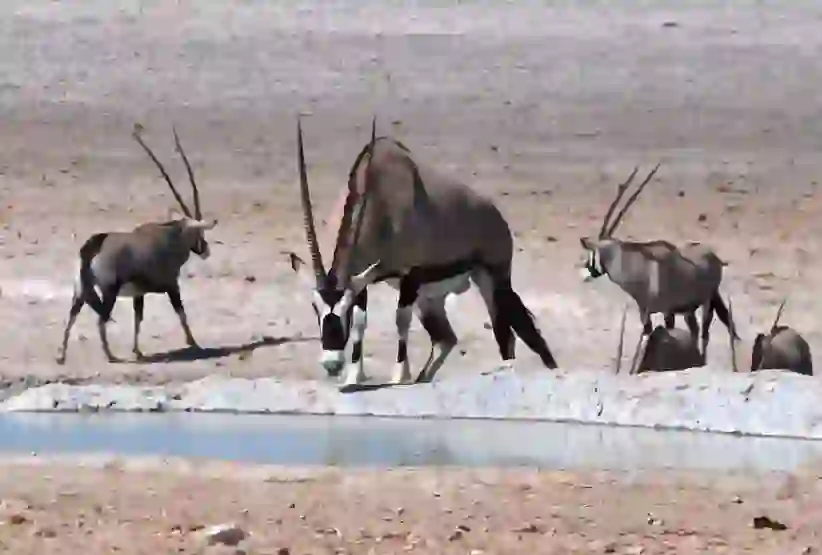
Why does Gemsbok live there?
Gemsbok are distributed in Africa (southern, western, and eastern regions) and southeastern Arabia.
Gemsbok are a type of antelope belonging to the group of animals called ‘Antelope’, which excludes the subfamilies Bovinae and Caprinae. Antelope are found in Africa, India, and Mongolia, but most of them live in Africa.
We investigated why Antelope and their relatives are mainly found in Africa, but we could not find a clear answer. However, one reason could be that there is enough food to support the lives of many Antelope and their relatives, such as gemsbok, on the vast land of Africa.
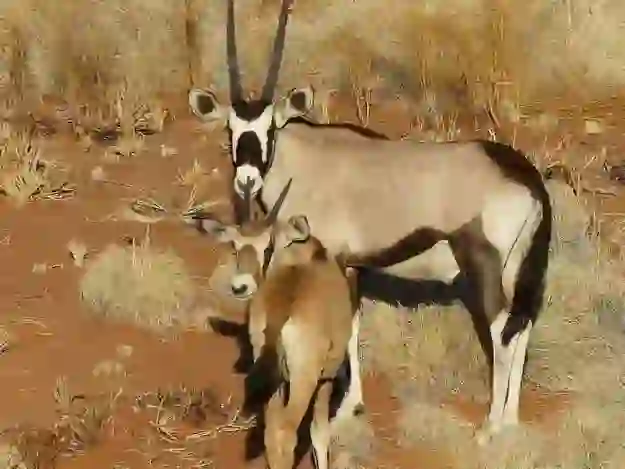
What does Gemsbok eat?
Gemsbok are herbivorous animals that live by eating grass, leaves, succulent plants, bark, roots, and fruits.
In zoos, they are given hay (dried grass), herbivore pellets, mineral salts, apples, carrots, and more.
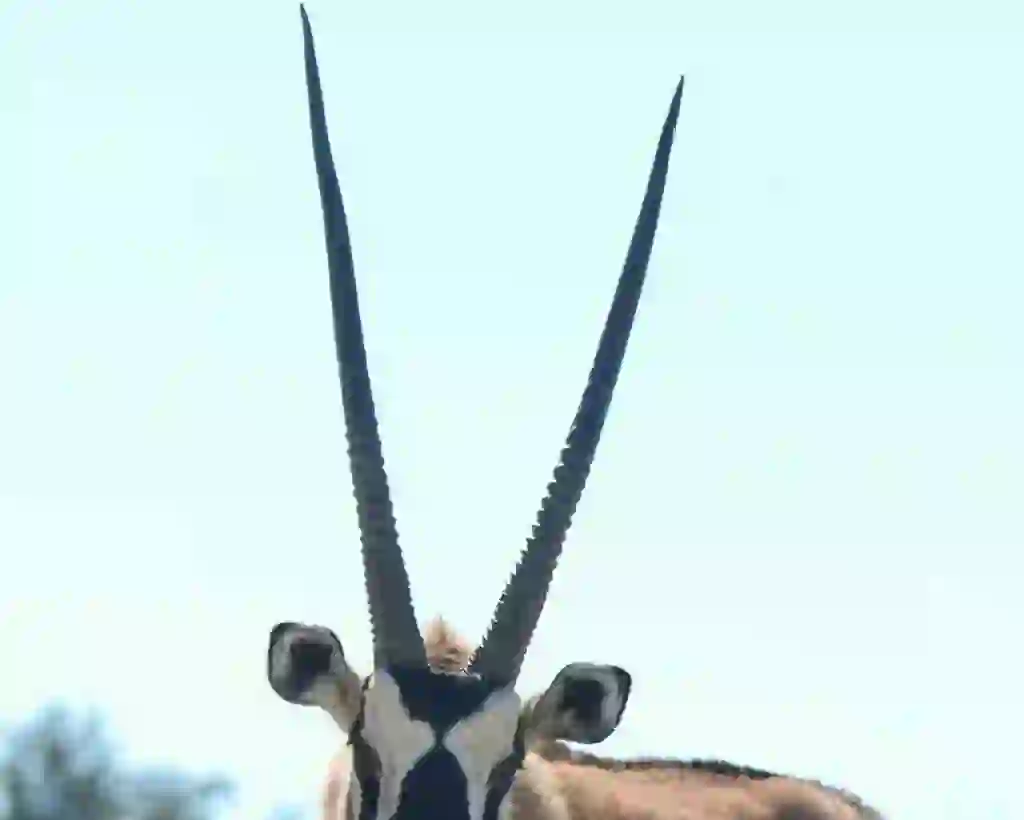
What role does the horn of Gemsbok have?
Gemsbok have horns that grow on both males and females, and their length can sometimes exceed 1 meter.
Gemsbok use these long horns as weapons when fighting against natural enemies such as lions and leopards. During the breeding season, males fight each other by locking horns over females. Both males and females also engage in a behavior called ‘sparring’, where they clash their horns together.
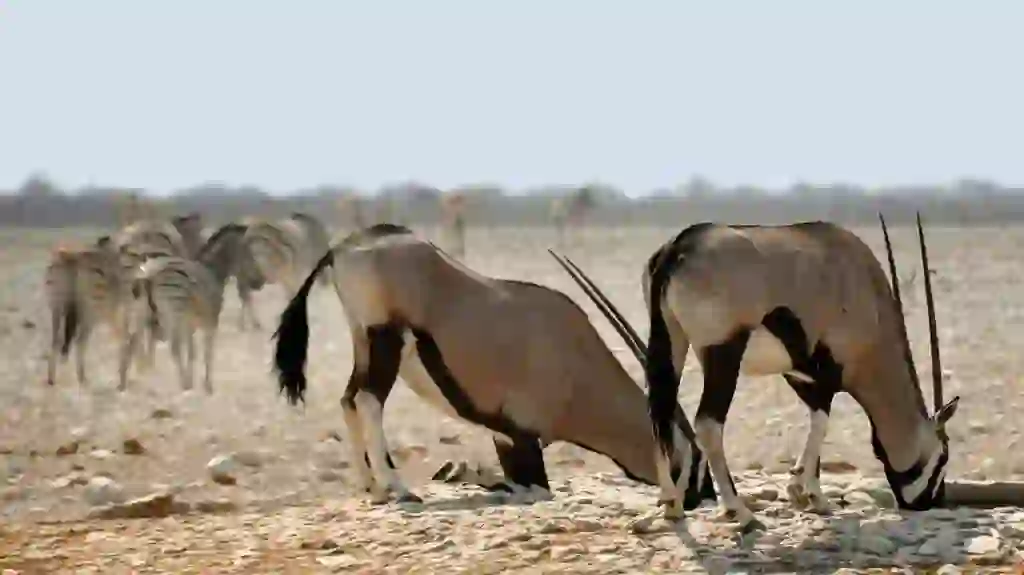
Is it true that Gemsbok makes a harem?
Indeed. Gemsbok, except during the breeding season, live separately as males and females. Females and their offspring usually form large herds of 30 to 40 individuals, sometimes exceeding 100 individuals. Males, on the other hand, live alone or in small groups. However, during the breeding season, males fiercely compete for females, and only the strong males that emerge victorious form harems with females and their offspring.
Gemsbok males fight fiercely even if they are parent and child, so it is necessary to keep males separate in zoos.
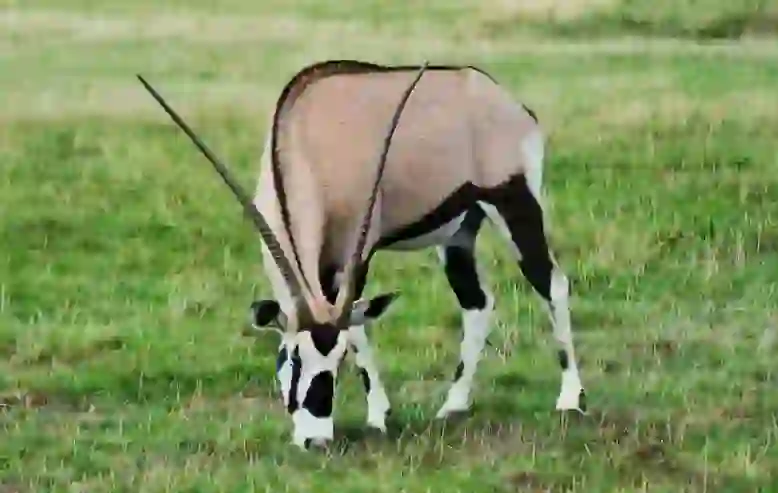
How can Gemsbok survive in the desert?
Gemsbok live in dry deserts where water is scarce. While many animals weaken and eventually die without access to water, Gemsbok can survive in the desert.
Firstly, Gemsbok utilize the minimal water content present in their food and drink dew that collects on rocks to obtain the necessary moisture for survival. As a result, Gemsbok that inhabit deserts can live without drinking water for extended periods.
Moreover, they possess special adaptations that enable them to thrive in dry and hot conditions. For instance, they raise their body temperature to around 45 degrees Celsius to prevent sweating, which helps conserve water. They also cool the blood flowing to their brain by inhaling and exhaling through their nose, which cools the capillaries in their nasal cavity. Additionally, they minimize water loss by concentrating their feces and urine before excretion.
Arabian Oryx, which inhabit extremely arid deserts, have distinct coloration with white bodies and black legs. The deserts where Arabian Oryx live experience scorching temperatures exceeding 40 degrees Celsius and minimum temperatures below 0 degrees Celsius. The white color of their bodies reflects intense sunlight, preventing an increase in body temperature. The black color of their legs is believed to facilitate efficient absorption of solar heat.
Gemsbok can survive in harsh desert environments due to these adaptations. However, they drink water like other animals when it is available.
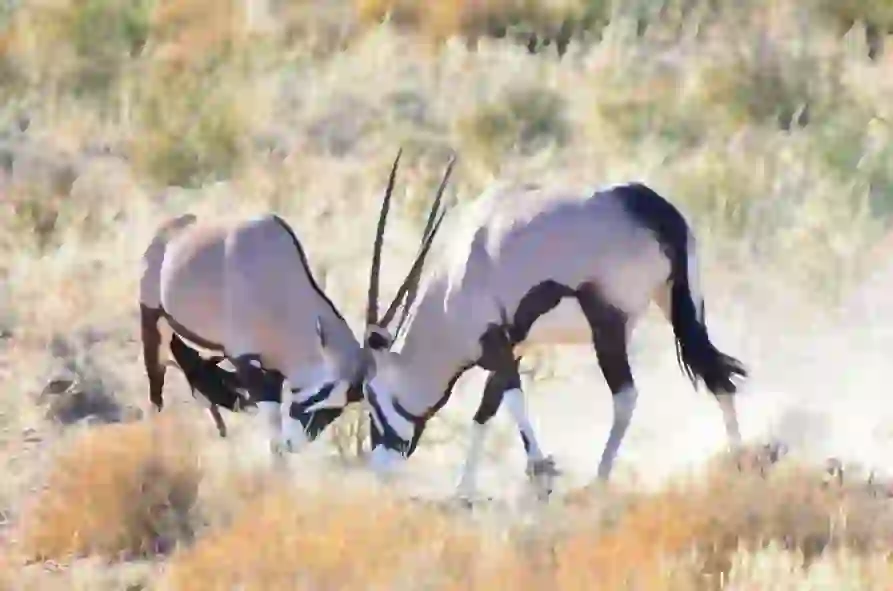
Can Gemsbok be kept as a pet?
If you want to keep a rare animal as a pet, you need to follow the laws established by each country. This time, I will introduce whether it is possible to keep Gemsbok at home in Japan. By the way, can individuals keep Gemsbok as pets?
If you try to import Gemsbok, which is a species of ungulate, from overseas, you need to clear more inspections and conditions than other animals due to diseases such as foot-and-mouth disease. Therefore, even zoos where animal professionals gather have been hesitant to import ungulates in recent years.
Among Gemsbok, “Arabian Oryx” and “Scimitar-horned Oryx” are classified as “Appendix I” under the “Washington Convention” as “species threatened with extinction due to trade or likely to be affected by trade”. Animals classified under Appendix I are protected worldwide and cannot be traded between countries unless there are special purposes such as research. Therefore, it is considered almost impossible to obtain them for keeping as pets.
By the way, “Gemsbok” is not subject to restrictions under the Washington Convention. If you really want to keep Gemsbok as a pet, it might be one option to consult with an animal dealer who is strong in animal import and export.

Is Gemsbok a unicorn model?
Indeed. The unicorn is an imaginary creature said to have a single twisted horn on its forehead and a horse-like body. It is believed that the “Arabian Oryx”, which inhabits the Arabian Peninsula and has a beautiful horn that is long and slightly curved backward, may be the model for the unicorn.
By the way, in medieval Europe, the unicorn’s horn was believed to be a cure-all medicine and was traded at a higher price than gold. There is also a background that at that time, the horn of the whale family called “narwhal” was circulating as the horn of the unicorn, so it is said that the narwhal is also a model for the unicorn.
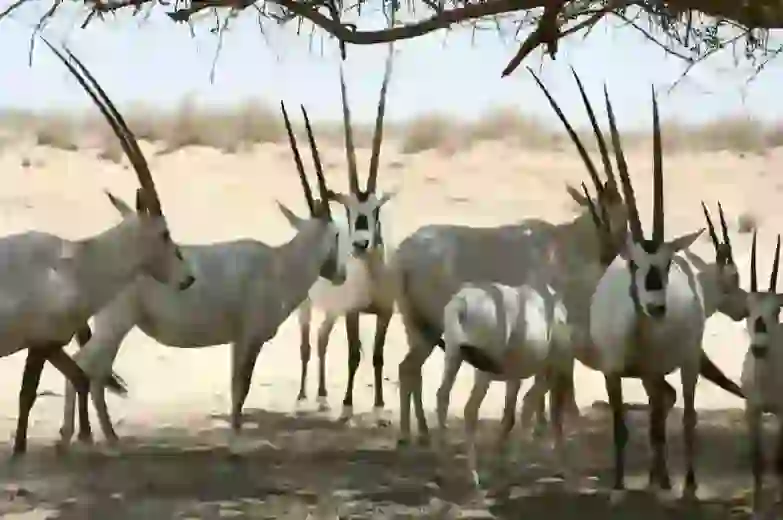
Is there a zoo where I can see Gemsbok?
Unfortunately, there are no zoos in Japan that exhibit or breed Gemsbok. However, some zoos keep and breed other oryx species such as the ‘Scimitar-horned Oryx’ and the ‘Arabian Oryx’.
The ‘Scimitar-horned Oryx’ is kept at the Tama Zoological Park in Tokyo and Adventure World in Wakayama Prefecture, while the ‘Arabian Oryx’ is kept at the Kanazawa Zoological Gardens in Kanagawa Prefecture and the Fukuoka City Zoological Garden in Fukuoka Prefecture.
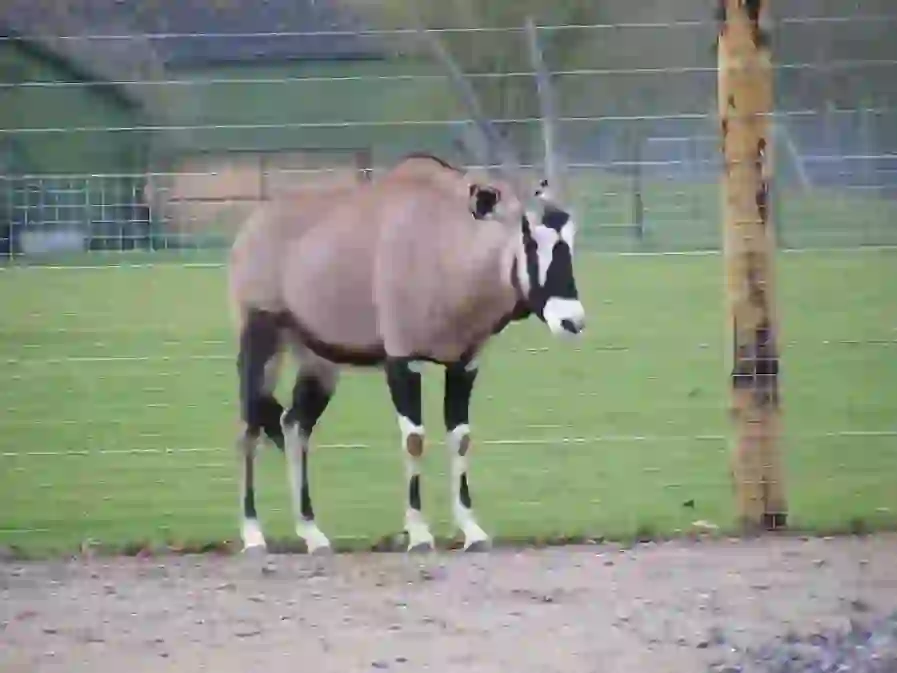
How long does Gemsbok live?
The lifespan of Gemsbok is estimated to be approximately 15-20 years.
There are records of Gemsbok living up to 22 years in captivity, but in domestic zoos, they often die around 17 years.
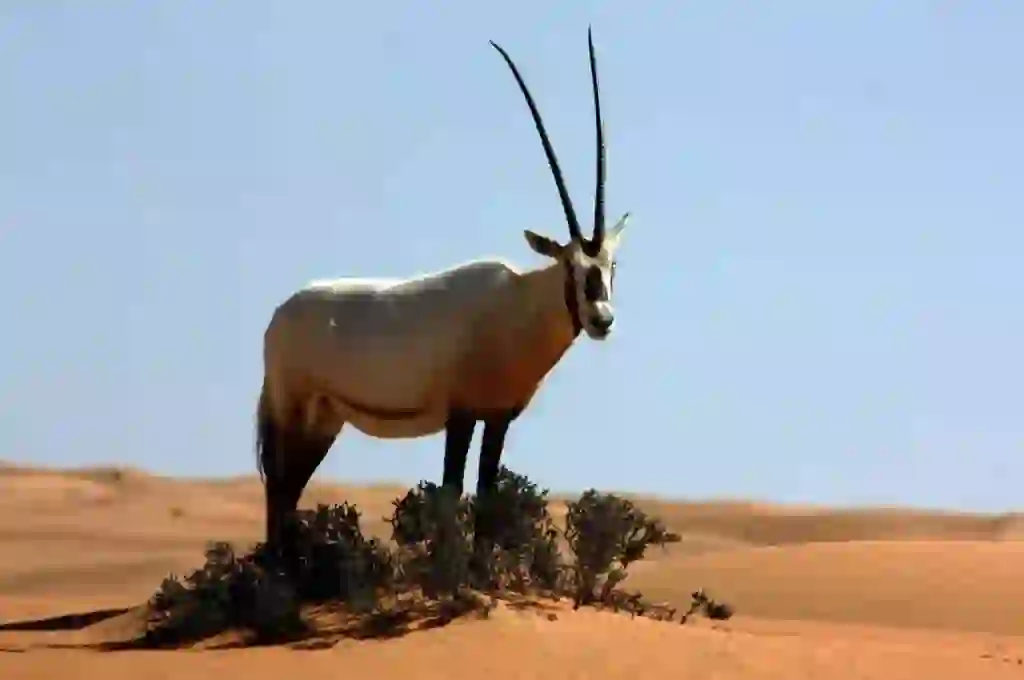
What enemies does Gemsbok have?
The natural predators of Gemsbok in the wild include carnivorous animals such as lions and hyenas.
However, for Gemsbok, the greatest threat comes from humans. Gemsbok have been heavily hunted for their beautiful horns, fur, and meat, resulting in a significant decline in their population.
As a result of overhunting, the Scimitar-horned Oryx has become extinct in the wild. However, individuals that were bred in zoos around the world have survived, and they are now classified as “Extinct in the Wild (EW).” The Arabian Oryx also became extinct in the wild at one point but was reintroduced from captive populations. Arabian Oryx can now be found in the wild.
Regarding Gemsbok, they are classified as a species of “Least Concern (LC),” indicating a low risk of extinction.

Would you like to become a part of the 'Animalbook.jp'?
Turn your knowledge into Q&A and share it with the world. ※Publication will be activated after purchase. Let's share information together!
Gemsbok Type of List
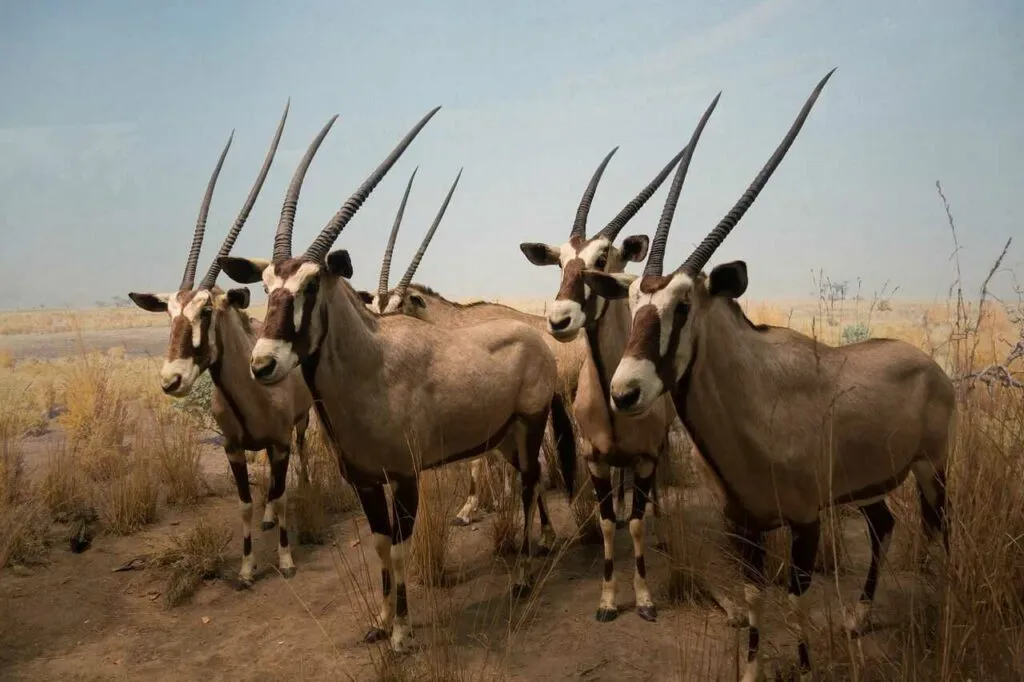
・Gemsbok. ・Beisa oryx. ・Scimitar-horned Oryx. ・Arabian Oryx etc.
※Classifications can vary from researcher to researcher and book to book.
Information
Congratulations! You are the first commenter!

Create Your Favorite List!
Gemsbok
Save the animals you love! Build your own list to quickly revisit your favorites later.

Would you like to leave a comment?
※Please note: This is for the purchase of rights to post comments within the article.
Find Your Favorites!
Our shop offers a unique and attractive selection of goods themed around various animals.
Gemsbok References

- スミソニアン協会(2017年)『驚くべき世界の野生動物生態図鑑』日東書院本社
- 愛媛県立とべ動物園「シロオリックスのハチ(♀)が死亡しました。」
- 福岡市動物園「アラビアオリックスの赤ちゃんが生まれました!」
- きみもなろう!砂漠博士「乾燥地の動植物」
- San Diego Zoo Wildlife Alliance「Oryx」
- コトバンク「オリックス」
- Buffalo Zoo「Gemsbok: Oryx gazella gazella」
- Zoological Park Organization – ZOO THAILAND「Oryx, Gemsbok (Oryx gazella)」
- The African Wildlife Foundation「Oryx」
- THE SANKEI NEWS「国内最高齢アラビアオリックス死ぬ 福岡市動物園」
Gemsbok Introduction of media used

出典:https://pixabay.com/images/id-4501807/

出典:https://pixabay.com/images/id-902378/

出典:https://pixabay.com/images/id-4244652/

出典:https://pixabay.com/images/id-1170218/

出典:https://pixabay.com/images/id-3801151/

出典:https://pixabay.com/images/id-4175796/
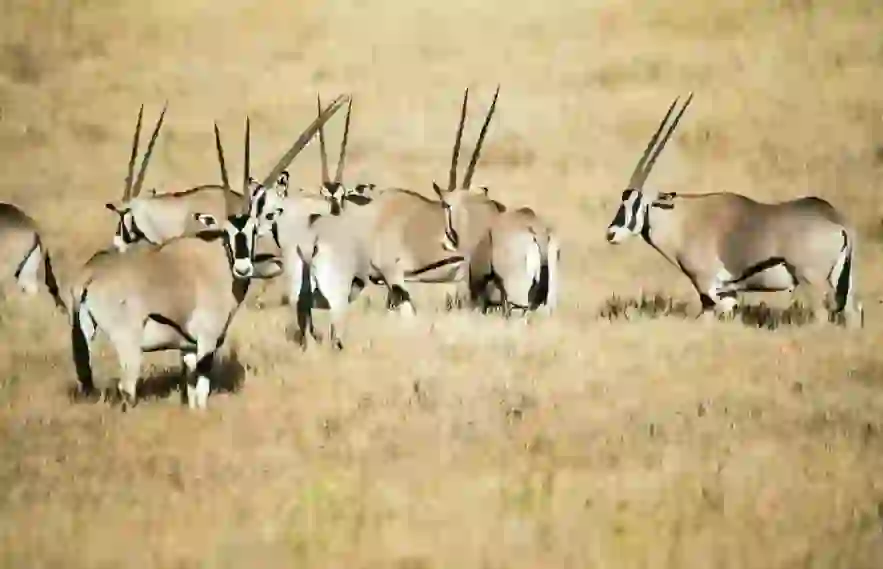
出典:https://unsplash.com/photos/Y2jyTrahVeg

出典:https://commons.wikimedia.org/wiki/File:Arabian_orix_.JPG

出典:https://commons.wikimedia.org/wiki/File:Gemsbok_(5909187497).jpg

similar
出典:https://pixabay.com/images/id-1607385/
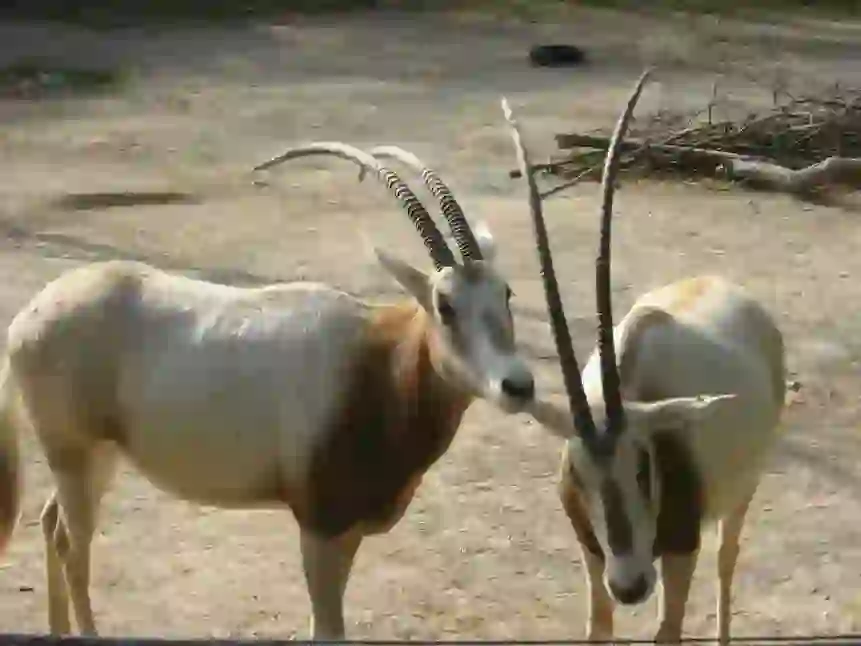
出典:https://commons.wikimedia.org/wiki/File:Scimitar-horned_oryx.jpg
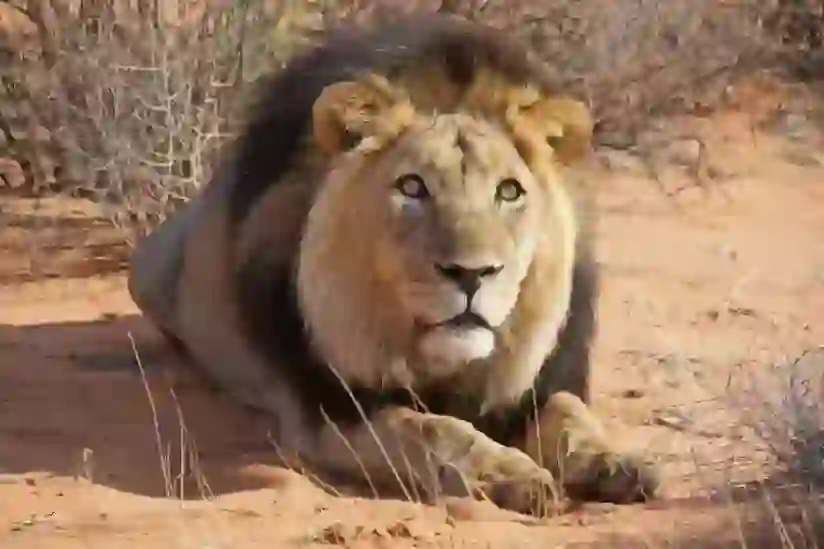
enemy
出典:https://pixabay.com/images/id-6108081/
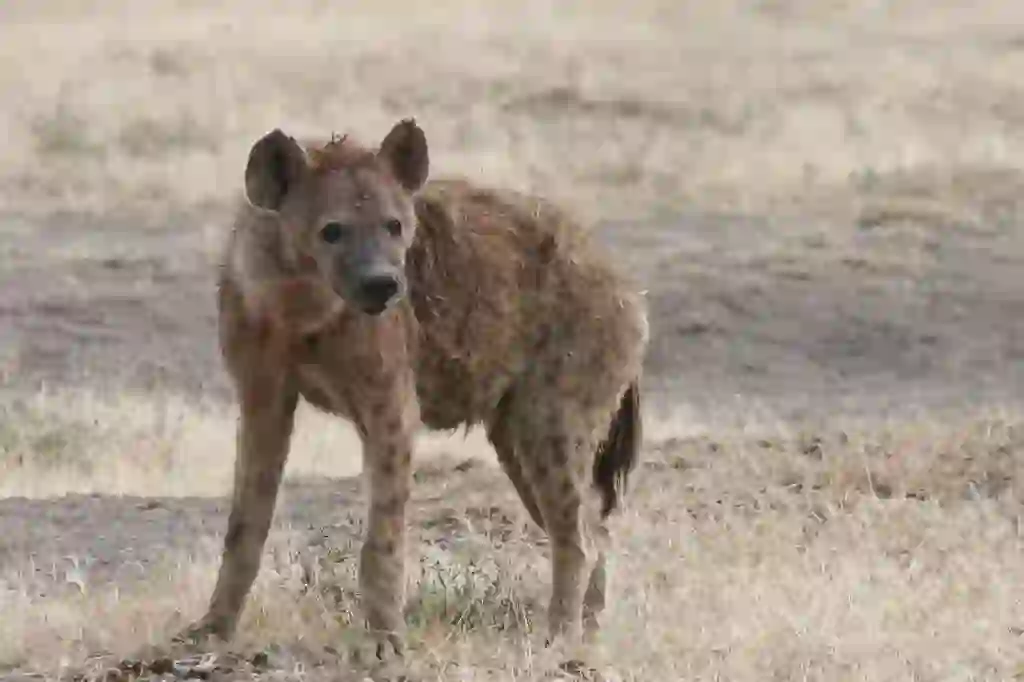
enemy
出典:https://pixabay.com/images/id-3426693/
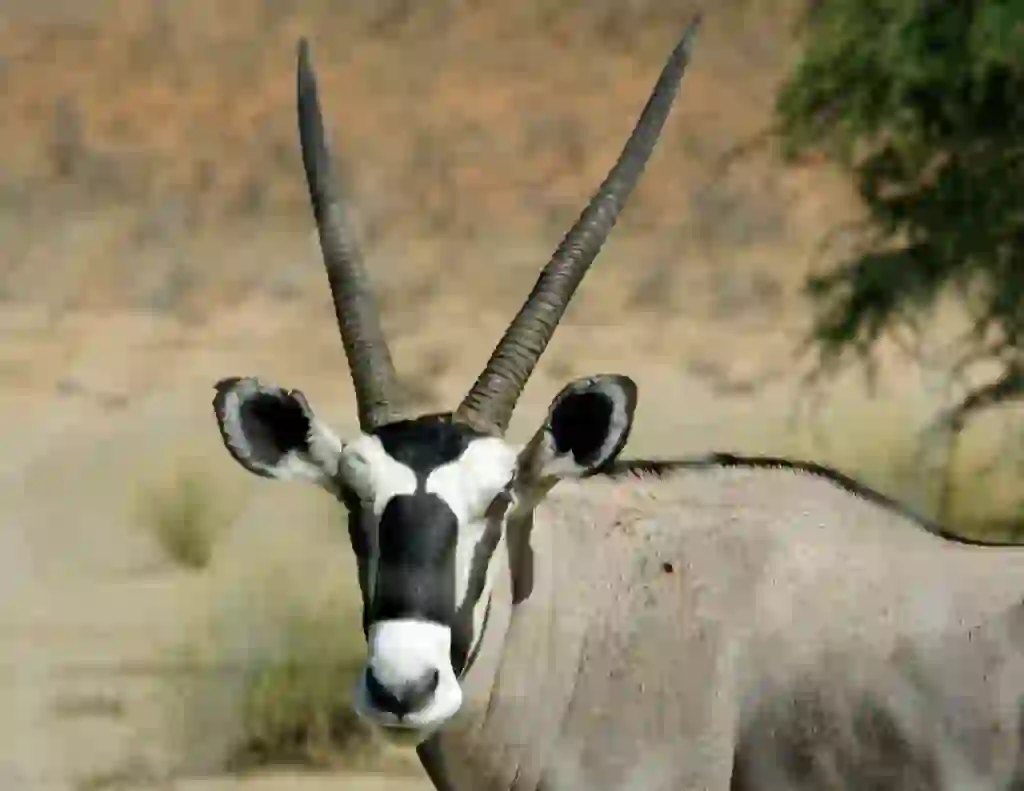
出典:https://unsplash.com/photos/vnW5BcmMT0o

Help Enrich Our Animalbook.jp with Your Media!
We are constantly looking to expand and enrich our Animalbook.jp with amazing photos and videos of animals. If you have any media that you'd like to share, please contribute and help us showcase the beauty and diversity of the animal kingdom. Your submissions will be credited and featured in our encyclopedia, reaching a wide audience of animal lovers.



















